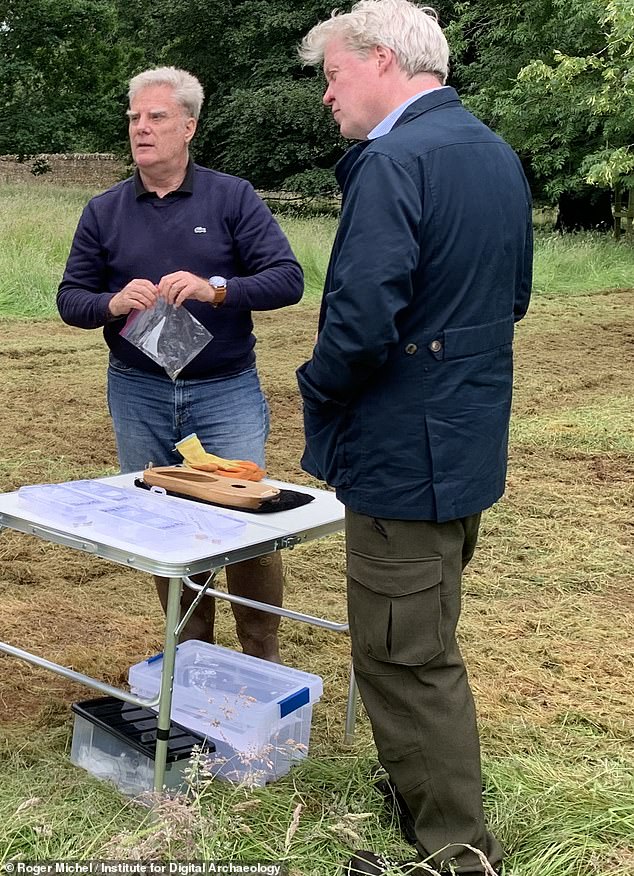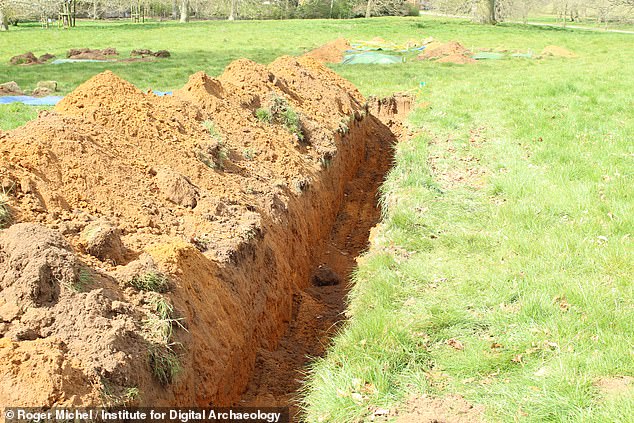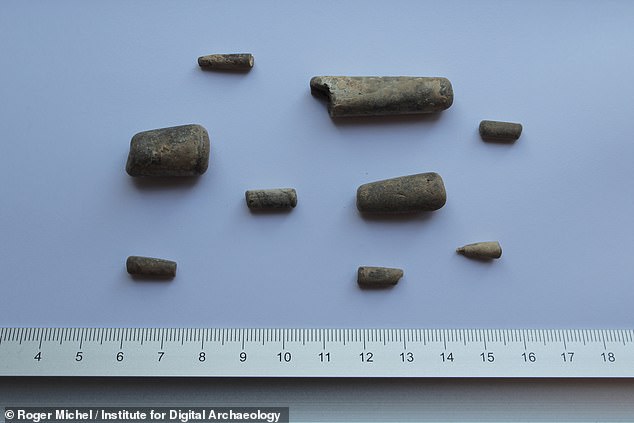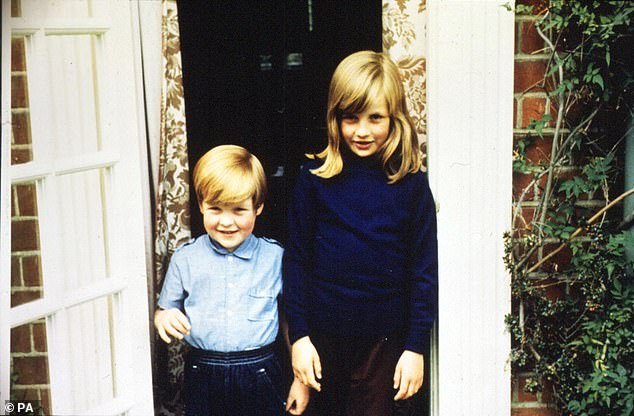Did NEANDERTHALS once live on Princess Diana's childhood estate? Archaeologists searching for 'lost' medieval village at Althorp stumble across ancient rubbish tip containing artefacts dating back at least 40,000 years
- Pieces of worked sea shell and antler were found in grounds of Althorp Park
- The Northamptonshire estate has been home of Spencer family since 1508
- Princess Diana's brother Earl Spencer ordered dig in hope of finding 'Olletorp'
- The village was abandoned in the 14th century during the Black Death
- Instead, archaeologists found artefacts indicating the presence of Neanderthals
11 October 2021
Archaeologists searching for a 'lost' medieval village on the childhood estate of Princess Diana have chanced upon what they believe to be evidence of Neanderthals having lived there.
Pieces of worked sea shell found at Althorp Park, in Northamptonshire, were originally thought to date back to the Middle Ages but carbon dating has revealed that they are in fact more than 40,000 years old.
The late princess's brother Charles Spencer had ordered the dig in the hope that it would uncover the site of the long-abandoned 'Olletorp' – a village whose inhabitants fled in the 14th century when the Black Death was running rampant.
The village was believed by Earl Spencer's father to lie around 1,000 yards west of the Grade I listed Althorp, which was built in 1688. The estate itself has been the family seat of the Spencer family since 1508, when an earlier house existed.
In January, experts from the Institute for Digital Archaeology dug test pits and trenches and used ground-penetrating radar at the 1.5 acre site.
Whilst they have not yet found evidence of Olletorp itself, they did find an ancient rubbish tip – called a midden – which, along with the shells, also contained pieces of worked antler and flint.
Both are evidence of tool making on the site. Now, carbon dating carried out on the artefacts indicates that the site is one of the earliest human settlements yet discovered in Britain.
It is believed to date back to the Palaeolithic period, when Neanderthals were living in Britain. The early humans occupied Britain for hundreds of thousands of years before modern humans arrived.

Pieces of worked sea shell found at Althorp, in Northamptonshire, were originally thought to date back to the Middle Ages but carbon dating has revealed that they are in fact more than 40,000 years old

The late princess's brother Charles Spencer (pictured right at the dig site with Roger Michel, the director of the Institute for Digital Archaeology) had ordered the dig in the hope that it would uncover the site of the long-abandoned 'Olletorp' – a village whose inhabitants fled in the 14th century when the Black Death was running rampant

Grade I listed Althorp was built in 1688. The estate itself has been the family seat of the Spencer family since 1508, when an earlier house existed
Roger Michel, the director of the IDA, told The Telegraph: 'We don't think the shells would have been the remnants of a prehistoric meal as Althorp was even further from the sea then than it is today.
'They are also incised. They could have been used for decoration or as spurs of mother of pearl for jewellery.'
Neanderthals were a close human ancestor that mysteriously died out around 40,000 years ago.
Archaeologists know that they were in Britain around 400,000 years ago thanks to the discovery of the skull of a young woman which was found in Swanscombe, Kent, in 1935.

Experts from the Institute for Digital Archaeology recently dug test pits and trenches and used ground-penetrating radar at the 1.5 acre site

Whilst they have not yet found evidence of Olletorp itself, they did find an ancient rubbish tip – called a midden – which, along with the shells, also contained pieces of worked antler (pictured) and flint

Neanderthals were a close human ancestor that mysteriously died out around 40,000 years ago. Pictured: The trench dug at Althorp
They then returned to Britain many times between then and around 50,000 years ago, possibly even later.
Modern humans began to reach Britain around 40,000 years ago, meaning that the Althorp discovery sits on the cusp of the ancient and modern world.
Mr Michel, who studied with Earl Spencer at Oxford University, said his team still hopes to find Olletorp.
He added: 'Our geophysical surveys of the site reveal many areas of interest that merit further exploration.

Pictured: Lady Diana with her younger brother as children at Althorp House. Since the death of his father, John Spencer, Earl Spencer has been the custodian of the Althorp estate
'Althorp may very well tell the entire story of the settlement of Britain from the time of the earliest human habitations straight through to the HS2 that will pass not far from the estate.'
The Earl is a professional historian and the author of books including the best-selling White Ship.
It tells the story of the sinking 900 years ago of a royal ship which was carrying King Henry I's only heir across the Channel from France to England.
In the summer, Earl Spencer was present when a team from the IDA found a wreck close to the spot, near Barfleur, in northern France, where the ship is believed to have sunk in 1120.
Princess Diana's final resting-place is on an island in the grounds of Althorp.
Earl Spencer has been custodian of the estate since the death of his father, John Spencer, in 1992.
Did NEANDERTHALS once live on Princess Diana's childhood estate? | Daily Mail Online